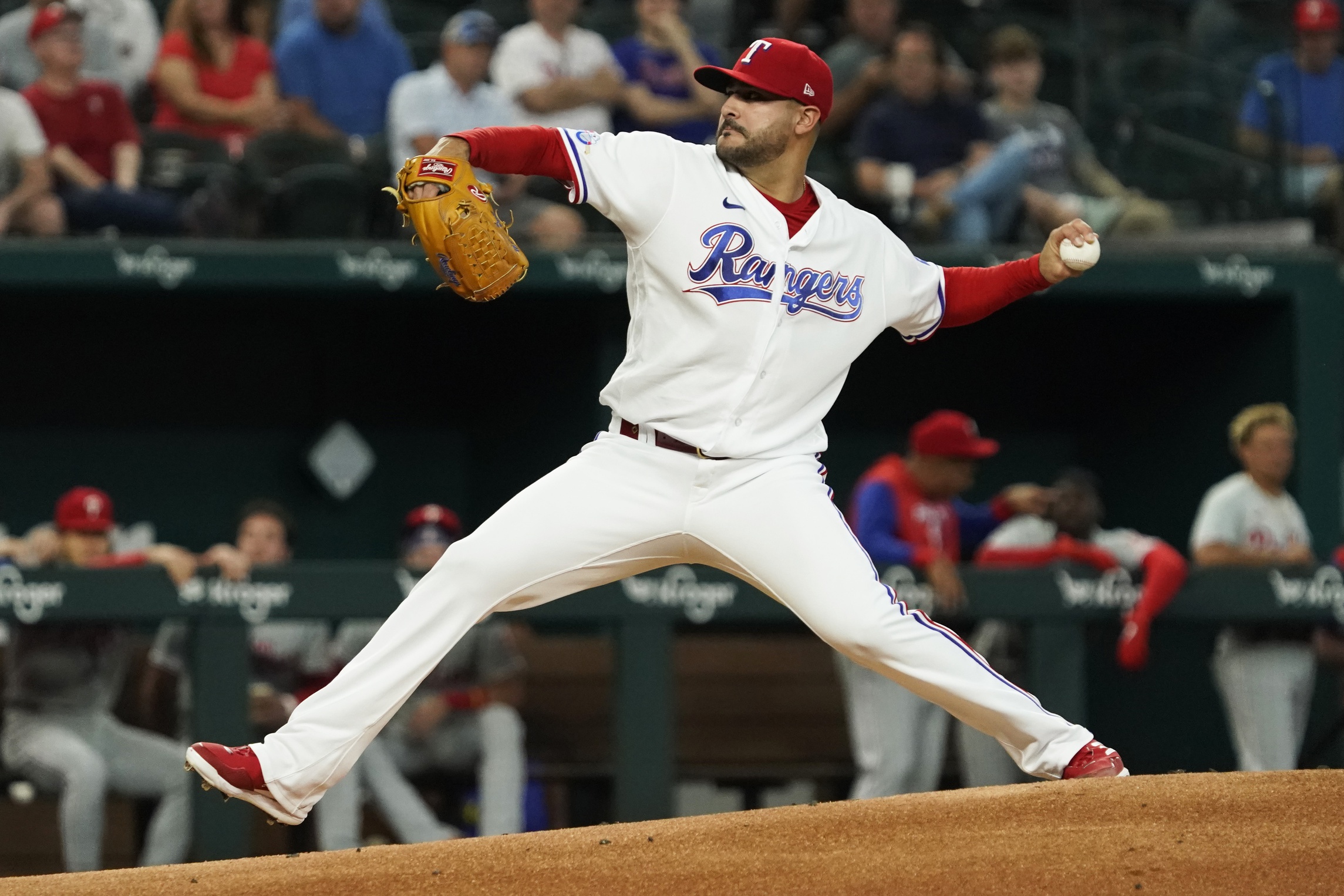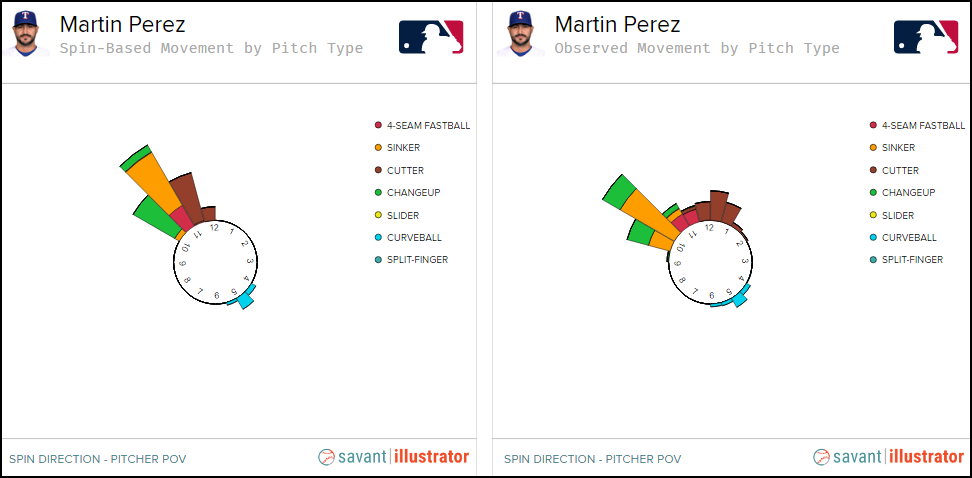Earning a Martín Pérez Experience

Woe. Malice. Dread. These are the emotions that have come to mind in the past when considering the prospect of rostering Martín Pérez for fantasy purposes. But these tempers have been tamed by Pérez in 2022 as he’s now frolicked his way to a top-25 SP. And yet, we still do not fully trust him, waiting for the other shoe to drop and for the home runs to once again rain down on his pristine ERA. But I, for one, would like to take a break to say I’m sorry.
Forgive me for the harm I have caused this Martín. None may atone for my actions but me and only in me shall their stain live on. I am thankful to have been caught, my fall cut short by those with wizened hands. All I can be is sorry, and that is all I am.
Now that he knows I mean it, let’s start shaking our maracas (or castanets if you’re so inclined) and get this MPE started.
Hold on…I forgot to hit the lights:
Now it’s a party.
What I’d like to do now is share with you some facts about your Martín Pérez. Because your Martín Pérez is an exemplary person, these facts should be very pleasing. Just relax your body and be open to the facts. Try to enjoy each equally. These facts are not to be shared outside this room. But for now, they’re yours to enjoy.
Your Martín Pérez Has a 1.96 ERA Over 14 Starts and 87 IP
The ERA itself is impressive but coming over 87 IP makes it that much more so. Pérez’s 1.96 ERA is fifth-best among qualified starters but of those ahead of him (Tony Gonsolin, Joe Musgrove, Sandy Alcantara, Shane McClanahan), only Alcantara has logged more innings. In fact, Pérez has the fifth-most innings in baseball and is on pace for ~200 IP, something he hasn’t come anywhere close to since his prime years of 2016 (198.2 IP) and 2017 (185 IP).
But even in that brief period of innings-eater past, Pérez’s ratios were nothing like what we’re seeing today, running a 4.39 ERA in 2016 and a 4.82 ERA in 2017. Again, even “prime” Pérez was running an ERA well over double what he’s done so far in 2022:
| Season | G | IP | ERA | FIP |
|---|---|---|---|---|
| 2012 | 12 | 38 | 5.45 | 4.15 |
| 2013 | 20 | 124 | 3.62 | 4.23 |
| 2014 | 8 | 51 | 4.38 | 3.70 |
| 2015 | 14 | 78 | 4.46 | 3.40 |
| 2016 | 33 | 198 | 4.39 | 4.50 |
| 2017 | 32 | 185 | 4.82 | 4.65 |
| 2018 | 22 | 85 | 6.22 | 5.72 |
| 2019 | 32 | 165 | 5.12 | 4.66 |
| 2020 | 12 | 62 | 4.50 | 4.88 |
| 2021 | 36 | 114 | 4.74 | 4.82 |
| 2022 | 14 | 87 | 1.96 | 2.63 |
And not to cherry pick but in Pérez’s case, it’s worth noting that he’s had exactly one bad start in 2022, allowing 6 ER on 12 hits over 5 IP in Chicago on June 11. Throw that rotten apple out and Pérez has a 1.42 ERA and 1.03 WHIP over his other 13 starts. Again, we’re still talking about Martín Pérez.
Your Martín Pérez Has Erased His Home Run Problems
As anyone who has tried to stream Pérez for the past five seasons can tell you, no matter how good a game started, it was always just a matter of time before he’d get blown up his noxious habit of serving up more dongs than a 4th of July eating competition. It wasn’t always like this, as Pérez allowed just a 0.77 HR/9 between 2012 and 2016 but once the home runs started rearing their ugly heads in 2017, they never let up. He allowed a 1.31 HR/9 between 2017 and 2021, culminating in a 1.53 HR/9 last season.
But not this year, my sweet innies. Pérez didn’t allow his first home run until his 11th start and has only allowed two total for the season, giving him a sparkling 0.21 HR/9 that leads all qualified starters. But alas, so too does a 2.6% HR/FB that screams regression is only a matter of time.
But does it have to? Pérez has gotten back to his extreme groundball ways in 2022 and is currently running a 52.8% GB% that’s his highest rate since 2016 and is the sixth-highest among qualified pitchers. The sinker has a 60.0% GB% (up from 53.0% in 2021), the changeup is at a 59.5% GB% (49.5% GB% in 2021), and while the cutter lags behind at a much more average 48.3% GB%, that’s still up 13-points since last season.
Here a bowling ball:
There a bowling ball:
Everywhere a bowling ball, ball:
Do you know what’s hard to elevate and hit home runs off of? You guessed it…
I hope that wasn’t a laugh. Please try to enjoy each fact equally, and not show a preference for any over the others. That’s ten points off. You have 90 points remaining.
Your Martín Pérez Has the Best Cutter in Baseball
Ok, maybe not the best but, at least, it’s been the most effective. Using Run Value as our divining rod, you’ll find a lot of familiar faces at the top of the list. Corbin Burnes, Kenley Jansen, Emmanuel Clase, Walker Buehler, (and of course, Nestor Cortes) – these are about the names you’d expect to find. And then there is Martín, whose cutter has a -9 Run Value that is second only to the -14 RV of Burnes. But that gap is more due to the large difference in usage, rather than actual effectiveness, as Burnes has thrown his cutter 794 times, more than double the 308 times that Pérez has, thereby accumulating more raw negative Run Value.
When looking instead at RV per 100 pitches, it’s Pérez’s cutter that really breaks the skin, running a -2.8 RV/100 that dwarfs the -1.8 RV/100 of Burnes, residing in first place ahead of Buehler (-2.4 RV/100), Clase (-2.2 RV/100), and Jansen (-2.2 RV/100).
Martín, you smug cutter chucker:
The cutter is used 24% of the time (a majority of the time against RHP), with its 22.2 inches of vertical break putting it in an elite class. But it’s not just the cutter that has allowed Pérez to succeed because like a bizzaro Lance Lynn, he pairs it with two other fastballs that twist and connect like a seam-shifted Voltron in and around the zone.
Your Martín Pérez Dominates Around the Strikezone
Taking a looking at Savant’s Swing/Take Leaderboard, it’s Pérez’s -23 RV on top when comes to success in the shadow zone. But it’s not just the aforementioned cutter doing all of the work, it’s how the pitch works in concert with the rest of a pitch mix that slips and slides in, and across, the zone.
As mentioned, the cutter has elite movement on the vertical plane but the sinker and four-seamer both have mundane movement going up and down but have premium movement on the horizontal. The sinker gets 6% less vertical movement than average but 6% more horizontal movement, while his four-seamer is getting 40% more horizontal break than average. But it’s not any one of his fastballs that has resulted in such bad contact but rather how the three work together, with the side force of seam-shifted wake helping add to the difficulty of squaring them up.
Pérez ‘s cutter has a 60-minute deviation between its observed and inferred spin axis, the four-seamer has a 15-minute deviation, and the sinker has a 30-minute deviation. But as important as the raw deviations, are the signs, as the four-seamer (-15) and cutter (-60) are being pushed by the side force in an opposite direction as his sinker (+30).

Let’s look at it from the batter’s POV:

Putting aside the curveball that’s easily his worst pitch (and should absolutely continue to be shelved), batters are dealing with two pairs of pitches that have similar commitment points but are attacking opposite parts of the zone with the seam-shifted wake effect enhancing their movement and adding to their deception as batters attempt to square them up.
Using right-handers as our example:
Four Seamer: Works in (with + horizontal movement)
Cutter: Works down and in (with + vertical movement)
Sinker: Works Away (with + horizontal movement)
Changeup: Works down and away
That’s a crafty mix when executed effectively! And one that is making it hard for batters to consistently square balls up and do damage. Just ask Nestor Cortes and Tyler Anderson, two other lefties that are getting the most out of their limited velocity by mixing and matching fastballs that are driven by seam-shifted wake effects.
This seam-shifted plan of attack is why Pérez has been so effective in the shadow zone, getting batters swinging at the pitches on the edge of the zone and limiting how often they are able to square the ball up. That’s why I don’t think it’s as simple as just assuming he’ll regress right back to his home run rates of the past, as batters will first have to actually find the barrel. And the proof’s in the pudding – Pérez has only allowed a 3.1% Brl% (5.9% league average) that’s a career low and is down from 9.3% in 2021.
Is Pérez going to allow more home runs? Almost certainly – but it’s time to give him some credit for how his pitch mix allows him to live on the edges of the zone and limit the barrels that send balls out.
Your Martín Pérez Can Setup a Tent in Under Three Minutes is a Fantasy Wizard
Do you know what Dylan Cease, Shane Bieber, and Julio Urías all have in common? They’re all behind Martín Pérez on the Razzball player rater. That’s a silly sentence to read but that doesn’t make it any less true and (like the aforementioned Cortes and Anderson), Pérez continues to be an excellent fantasy option, even if he doesn’t have the flash and sizzle that big strikeout pitchers come with.
He might not be an automatic start every week for the rest of the season but until batters can actually start doing some damage against his shifty mix, we should sit beside him at his revolving and start giving him his proper due.







Wow, shades of Sullivan with this combo of insight and humor!
That is about the finest compliment I could ever hope to receive. I mean, it’s probably totally unwarranted but I don’t care!… I’m taking it.